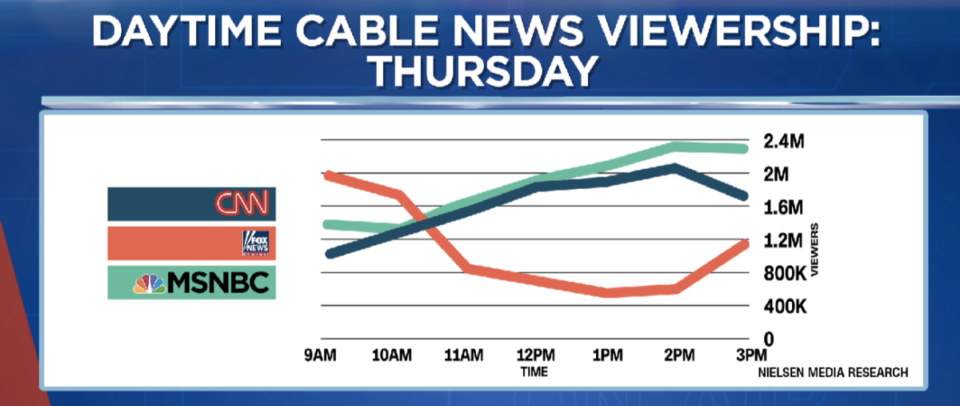Fox Viewers Tuned Out Lewis Funeral:
‘Talk About a Polarized America’
3,700 Due at ‘Virtual’ NABJ-NAHJ Convention
AP: Protesters Don’t Fit Trump’s Description
ProPublica Tracks Outcomes in Police Abuse
Joyner Cruise Cancellation Hurts Revenue
Washington Post, AP Differ on ‘W’ for ‘White’
Philly Inquirer Curbs Use of Mugshots
Dallas Morning News Partners With Black Paper
Addressing Racism in Food, Travel Writing
Industry Group Aids Makeover of Black Papers
A Grim Anniversary Marred by COVID-19 Limits
Imogene Harris, Gary Publisher, Dies at 88
Journal-isms Fund Drive Continues
Short Takes
Support Journal-isms‘Talk About a Polarized America’
Fox News joined other networks in broadcasting live the services Thursday for civil rights hero John Lewis, but ratings for the right-wing network took a steep dive during the service, only to return once the event was over.
“This is what we’re dealing with,” New York commentator Errol Louis said on Sunday’s “Reliable Sources” media show on CNN, responding to a display of the ratings figures by host Brian Stelter.
“Talk about a polarized America. This is something we should be teaching in journalism school,” Louis said.
Stelter showed viewers the normal Wednesday Nielsen ratings for Fox, CNN and MSNBC during the funeral’s time period. At 3 p.m. Fox had about 2 million, CNN, more than 1.6 million and MSNBC, 1.6 million.
Stelter explained later in his “Reliable Sources” newsletter, “Fox had nearly 1.9 million viewers in the 9am hour, but once the funeral began, viewership dropped precipitously… 825,000 viewers in the 11am hour, 540,000 viewers in the [1pm] hour. A dramatic decline… during a big news event… is astonishing to see.
“After Barack Obama’s eulogy for Lewis, Fox viewers started to come back… The network averaged 595,000 viewers in the 2pm hour and 1.1 million in the 3pm hour. CNN and MSNBC had far bigger audiences.”
“This is stunning,” Stelter said. “Have Democrats been so damaged by Fox News that even the the celebration of a civil rights hero is something they didn’t want to watch?”
- Biba Adams, The Grio: Tucker Carlson slams Obama’s John Lewis eulogy, calls him ‘greasy politician’
- Associated Press: Transcript: Barack Obama’s address at John Lewis’ funeral
- Dorothy Bland, Media Diversity Forum, Louisiana State U.: Comforting soundtracks from the summer of 2020?Unforgettable and Good Trouble
- Freedom Forum: First Five Now: How John Lewis Makes ‘Good Trouble’ (video)
- Hasan Kwame Jeffries, Washington Post: Stokely Carmichael didn’t deserve Bill Clinton’s swipe during John Lewis’s funeral
- A.J. Katz, Adweek: Thursday, July 30 Scoreboard: Fox News Wins Prime Time; CNN, MSNBC Split John Lewis Funeral Coverage Ratings
- Gene Policinski, Freedom Forum: U.S. Rep. John Lewis: A First Amendment Champion (July 20)
- Joy Reid with Al Franken and Jonathan Capehart, “The ReidOut,” MSNBC: Who won the week? Xernona Clayton, [LeBron] James, those who followed celebration of John Lewis (video)
3,700 Due at ‘Virtual’ NABJ-NAHJ Convention
The “virtual” joint convention of the National Association of Black Journalists and the National Association of Hispanic Journalists gets under way Wednesday with about 3,713 people registered and 3,119 interviews scheduled in the online career fair, according to Drew Berry, NABJ executive director.
 This convention “will become the sixth highest-attended event in our convention history,” Berry said in an email blast Monday.
This convention “will become the sixth highest-attended event in our convention history,” Berry said in an email blast Monday.
The demand was such that the convention planners had to add interview slots, Berry said. There will be 160 booths and the organizations are still getting requests, Berry told Journal-isms Tuesday.
He said in a second email blast Monday, “Because of new financial strategies, a plethora of new and existing partners, sponsors, and donors, we are officially going to exceed our revenue goals and will have far fewer expenses this year.”
Big name political speakers have yet to be announced, although celebrities Jenifer Lewis and Chance the Rapper are scheduled.. The joint conventions had been scheduled for Washington during presidential election years to take advantage of candidate campaigning. In 2016, Hillary Clinton spoke; Joe Biden, then vice president seeking re-election with Barack Obama, addressed the NABJ convention in New Orleans in 2012.
The opening ceremony Wednesday at 6 p.m. Eastern, the W.E.B. DuBois plenary session and an appearance by a “high-profile political figure” can be viewed on nabj.org by those who are not registered for the convention, Berry said. The DuBois panel is to be moderated by “NBC Nightly News” anchor Lester Holt and “Latino USA” host Maria Hinojosa. The topic is “Progress Before, Progress After: The Criminal Justice System and COVID-19,” with 16 participants listed.
The executive directors of the two associations said they were not ready to provide a breakdown of attendees between the two groups, but in 2016, NAHJ said it had “nearly 700” of the total 3,890 in attendance.
An Associated Press analysis “reveals a group whose motives are as varied as the acts leading to their arrests.” (Credit: Oregonian) (video)
AP: Protesters Don’t Fit Trump’s Description
An Associated Press analysis of more than 200 arrests in Portland Ore., where President Trump deployed more than 100 federal law enforcement agents, saying the agents were there to protect federal property, has found that “even those accused of breaking the law during the liberal city’s nightly rallies don’t neatly fit into President Donald Trump’s depiction of protesters as ‘anarchists and agitators,’ ” Suman Naishadham and Jake Bleiberg reported Thursday for the AP.
The AP report continued, “A review of court documents, social media posts and other public records from people arrested by federal and local authorities since mid-June reveals a group whose motives are as varied as the acts leading to their arrests.
“They’re Black Lives Matter activists who have been in the streets since George Floyd died at the hands of Minneapolis police in May, groups of self-proclaimed parents using leaf blowers to drive away tear gas and black-clad provocateurs taking advantage of the nightly chaos that’s gripped downtown Portland for over two months and led Trump to deploy federal agents in early July.
“The AP found that 95% of those arrested by police and federal agents were local. The vast majority have no criminal record in Oregon. Many appear to be college students. Their average age was 28, court records show. . . .”
- Amnesty International: USA: The world is watching: Mass violations by U.S. police of Black Lives Matter protesters’ rights
- Wayne Bennett, the Field Negro: trump’s army. (July 20).
- Maxine Bernstein, The Oregonian/OregonLive: Judge temporarily bars federal officers from using force, threats, dispersal orders against journalists, legal observers (July 23)
- Nicole Carroll, USA Today: The Backstory: What our reporters saw, heard and learned at the Portland protests
- Shane Harris and Nick MIroff, Washington Post: DHS official whose office compiled ‘intelligence reports’ on journalists and protesters has been removed from his job
- Ken Klippenstein, The Nation: How the DHS Can Still Arrest Journalists in Portland
- Sherry Ricchiardi, datajournaism.com: Capturing racial justice protests with data: How verification and open source investigative techniques exposed police brutality, racism and the need for change
- Eric Tucker, Associated Press: A look at the antifa movement Trump is blaming for violence (June 2)

ProPublica Tracks Outcomes in Police Abuse
”As protests erupted around the country in late May in response to the killing in police custody of George Floyd, police departments seemed to respond with more violence,” Zipporah Osei, Mollie Simon, Moiz Syed and Lucas Waldron reported Wednesday for ProPublica.
“In the ensuing weeks, hundreds of videos of police interactions with protesters surfaced on Twitter and other social media sites, often drawing outrage and, in some cases, swift disciplinary and legal action.
“ProPublica wanted to find out what happens after these moments are caught on tape. We culled hundreds of videos to find those with the clearest examples of officers apparently using a disproportionate level of force against protesters and reached out to 40 law enforcement agencies about the 68 incidents below.
“For each incident, we inquired about any disciplinary action, investigations and whether the department would disclose the officer or officers involved. While some departments provided details or relevant public records, others leaned on state laws to withhold information. Here’s what we learned about each case. . . .”
Separately, the U.S. Press Freedom Tracker tweeted Wednesday, “We have now surpassed *600* reports of aggressions against journalists while covering Black Lives Matter protests over the past two months.”
- Jackson Chen, Digital Privacy News: Groups Suing Police for Transparency on Stingray Surveillance Use
- Josh Gerstein, Politico: Citing impostors, feds urge lifting of court order protecting journalists amid Portland protests
- Patrick Radden Keefe, CrimeReads: The Power — and the Responsibility — of True Crime Writing
- Zipporah Osei and Mollie Simon, ProPublica: What Has Happened to Police Filmed Hurting Protesters? So Far, Very Little.
- Derek Willis, Eric Umansky and Moiz Syed, Pro Publica: The NYPD Files: Search Thousands of Civilian Complaints Against New York City Police Officers (July 26)
- Eric Umansky, Tom Devine and Frank Serpico, with Brooke Gladstone and Bob Garfield, “On the Media,” WNYC-FM, New York: “Break Your Silence: A Fight Over Cop Misconduct Records Continues” and “Frank Serpico Has Seen This All Before” (podcast)

Joyner Cruise Cancellation Hurts Revenue
The cancellation of the sold-out Tom Joyner cruise — the “Party with a Purpose” — caused revenue for the parent Reach Media to be off 66 percent and contributed to “shocking” losses for Reach Media’s parent Urban One, Inc., Radio Ink reported Friday.
“While the Q2 revenue numbers presented by Urban One CEO Alfred Liggins Thursday were expected, they were still shocking to hear. An overall revenue decline of 37.5%, local radio down 61.2%, national down 49%. The days of grumbling over a 1% increase or decrease in revenue seem so far away,” the publication said.
“CFO Peter Thompson dug deeper into the quarter and shared the damage COVID-19 did to some of the categories. Entertainment was down 90%, Food & Beverage dropped 83%, Auto was off 71% and Telecom dropped 68%.”
Joyner’s “Fantastic Voyage” was created as a fundraiser to support students at historically Black colleges and universities.
” ‘Because of COVID-19, the Joyner organization decided to postpone this year’s Fantastic Voyage, scheduled to sail aboard Carnival Magic,” Vance Gulliksen, Carnival Cruise Line’s spokesman told NBC News, Karen Robinson-Jacobs reported June 11 for NBC News. “That decision came March 12, the day before Carnival announced its voluntary suspension of operations. . . .”
The retired radio host posted a statement April 20 in which he said, “It took eighteen months to get all the interlocking pieces together to produce the cruise…it can’t be undone quickly without tremendous financial loss to passengers. The novel coronavirus has surprised our suppliers as much as it’s surprised us, as much as it’s surprised you, our passengers. I wish things were different…I wish we’d spent the first week of April in exotic locales instead of our sofas…but we couldn’t…and it’s no one’s fault. . . .”
“But enough bad news,” Radio Ink continued.
“Liggins said April was the bottom and things are improving heading into Q3. The MGM Grand Casino that Urban One has an investment with is back open, operating at 50%, and the company should see some revenue soon from the Casino. Q4 will see a bit of a lift with 2020 being such a heavy political season. Liggins said the company has had conversations with the Biden camp. He’s very encouraged and hopeful about their need to reach the Urban One audience. . . .”
Urban One, Inc., formerly known as Radio One, Inc. says it is the largest African American-owned multimedia company primarily targeting Black and urban audiences.
Representatives were not available Monday to report whether prospective cruise passengers received refunds.
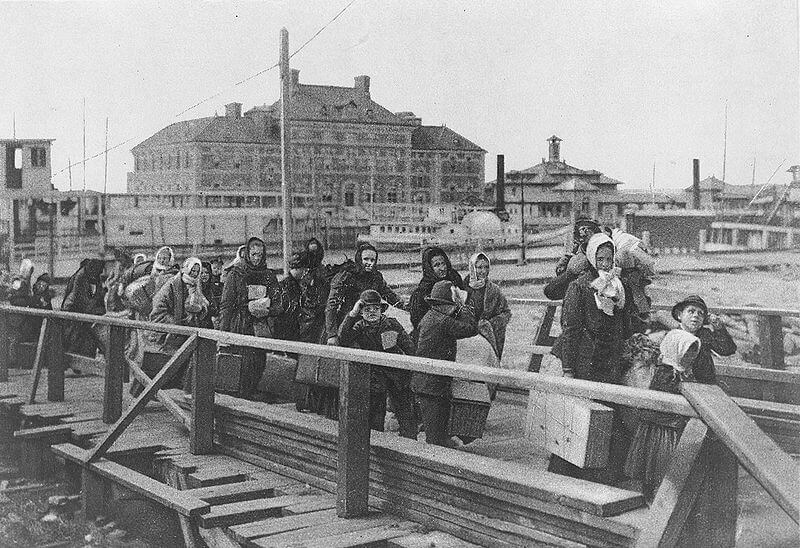
Washington Post, AP Differ on ‘W’ for ‘White’
The Washington Post and the Associated Press have decided to lower-case “white” when referring to white people, but the Post joined the AP and a tide of other news organizations in capitalizing “Black.”
“After years of discussion, AP’s leadership determined there was a clear desire and reason to capitalize Black,” Colleen Newvine, product manager for the AP Stylebook, recapped in a July 28 notice. “Most notably, people who are Black have strong historical and cultural commonalities, even if they are from different parts of the world and even if they now live in different parts of the world. That includes the shared experience of discrimination due solely to the color of one’s skin.
“There is, at this time, less support for capitalizing white. White people generally do not share the same history and culture, or the experience of being discriminated against because of skin color.”
The Post said , “The use of Black is a recognition and acknowledgment not only of the cultural bonds and historical experiences shared by people of African heritage, but also the shared struggles of the descendants of enslaved people, families who immigrated generations ago and more recent immigrants from Africa, the Caribbean and other corners of the world.”
However, the Post’s guidelines, issued July 29, are nuanced. They allow for the capitalization of ‘White.”
“Stories involving race show that White also represents a distinct cultural identity in the United States,” they say.
“In American history, many White Europeans who entered the country during times of mass migration were the targets of racial and ethnic discrimination. These diverse ethnicities were eventually assimilated into the collective group that has had its own cultural and historical impact on the nation. As such, White should be represented with a capital W.
“In accordance with our style change, people who do not want to be recognized as a color also have the choice of representing themselves by their cultural background, as they currently do, identifying as German American, Irish American, Italian American or other representations of national heritage.
“Separately, we will limit the uppercase version of the racial categorization Brown to direct quotations and use it sparingly in other instances. Although the term has gained general acceptance, the designation is seen by many as a catchall to describe people of color of vastly diverse ethnic and cultural backgrounds who are not Black.
“In the three above cases [White, Black and brown], our style guidance recognizes these racial demographics have been inexorably linked when analyzing America’s development and treatment of its citizens. As such, they should be treated similarly in terms of capitalization. However, other colors as racial identifiers have not been commonly adopted by members of the ethnic groups they are often used to portray, as many consider the terms insults or slurs. Those identifiers will remain lowercase. . . .”
The Post also clarified its policy on using “American Indian, Native American or Alaska Native”; “Asian American”; “Hispanic or Latino”; “Indigenous or Aboriginal peoples” and “Native Hawaiian or other Pacific Islander.”
- Associated Press Style Book: Race-Related Coverage
- Nell Irvin Painter, Washington Post: Why ‘White’ should be capitalized, too
- Sean Scully, Napa Valley (Calif.) Register: Still no clarity on style for racial names
Philly Inquirer Curbs Use of Mugshots
“Mugshot photos will no longer be a default or routine option for crime stories,” Philadelphia Inquirer editors told staffers on Monday, joining a growing trend.
“Mugshot photos will only be considered for publication when the story meets one or more of the following criteria: the photo is of a public figure, the crime in question has achieved broad notoriety, or there is a compelling public safety reason to publish the mugshot. Mugshot photos may not be published for any other reason. This standard applies both pre and post-trial.”
The editors also said, “Overuse of mugshots can undermine the presumption of innocence; because of large racial disparities in arrest rates, routine use of mugshots also disproportionately feature Black and Latinx people; “There is limited news value in the physical appearance of alleged criminals with no public profile; and years-old mugshots on news sites can make it difficult or impossible for people to find jobs.”
Dallas Morning News Partners With Black Paper
“In an effort to boost coverage of Dallas’ communities of color, particularly in southern Dallas, The Dallas Morning News is partnering with Texas Metro News, a Black-owned publication that covers news and issues in Dallas’ Black community,” Charles Scudder reported July 28 for the Morning News.
 “The agreement will allow Texas Metro News to publish articles from The Dallas Morning News at no charge, while The Morning News will pay a consulting fee for Texas Metro News journalists to help with sourcing, story idea generation and more.
“The agreement will allow Texas Metro News to publish articles from The Dallas Morning News at no charge, while The Morning News will pay a consulting fee for Texas Metro News journalists to help with sourcing, story idea generation and more.
“ ‘They don’t and won’t ever pay us anything,’ said Mike Wilson (pictured), editor of The Dallas Morning News. . . .
“Wilson and North Texas editor Jamie Hancock, who oversees the local initiative at The Dallas Morning News, said they recognized that coverage from the newspaper had not been as strong in some of those communities, which is why they reached out to Texas Metro News.
“ ‘We came to that with a full awareness that we haven’t been around those communities as well as we could have through the years,’ Wilson said. ‘We’re coming into it humbly.’
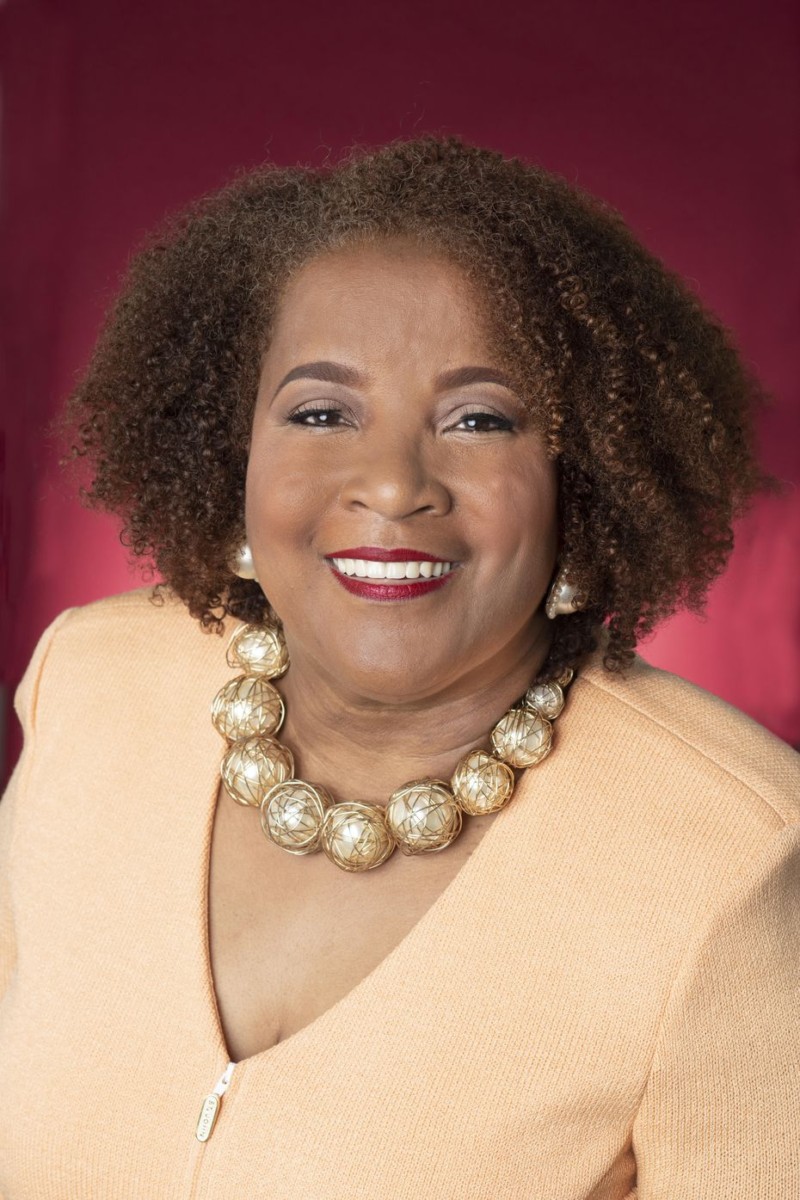 “Cheryl Smith (pictured), the editor and publisher of Texas Metro News, said she appreciated that editors from The Dallas Morning News approached the relationship as an opportunity for both publications to improve their journalism. It would not be just about checking a box for diversity, she said.
“Cheryl Smith (pictured), the editor and publisher of Texas Metro News, said she appreciated that editors from The Dallas Morning News approached the relationship as an opportunity for both publications to improve their journalism. It would not be just about checking a box for diversity, she said.
“ ‘Our team knew it wasn’t a light decision; it wasn’t tokenism,’ Smith said. ‘The Morning News wanted journalism.’ . . .”
- Gus Bova, Texas Observer: Inside the Dallas Morning News Union Fight

Addressing Racism in Food, Travel Writing
The nation’s reckoning with racism “has also had ramifications in the food world, from the resignation of Bon Appétit’s editor-in-chief Adam Rapoport after a photo of him in brown-face surfaced, to decisions to discontinue racist branding of food products,” Crystal Ligori and Jenn Chavez wrote Saturday for OPB, public broadcasting in Oregon.
“But the problems with the food industry go deeper than recent incidents. White chefs have long gained prestige through culturally appropriated cuisines. Even how the food media covers everything from restaurants to recipes is often skewed through a white lens. . . .”
Separately, Sarah Khan, writing July 6 in Conde Nast Traveler, said much the same about travel writing.
“Goats. Cows. Traffic jams. Colors. People. Poverty. Bingo!
“Stories set in India frequently read like this, riddled with one-note musings on traffic, noises, crowds, slums, and colors. I’ve lived in and traveled extensively throughout India, and it’s disappointing to find the same narratives over and over. That’s not to say traffic, noise, crowds, slums, and colors don’t exist in India, or that [they] can’t be described evocatively. But what if every story about New York contained a lyrical ode to taxis — would you learn much about the city, its people, or what there is to do? . . .”
Khan also wrote, “Travel media has been dominated by white voices for far too long, despite the fact that travel storytelling relies on perspectives. A travel-writing utopia would be one that’s full of nuance and expertise, but also more representative of the way we travel: Korean-American writers covering Argentina, Black writers reporting on India, Puerto Rican writers visiting Kenya — because their perspectives will broaden the way we come to view these countries. . . .”
- A’Lelia Bundles, Variety: Hollywood Has a Responsibility to Get Black Stories Right (Guest Column)
- Michael Depp, TVNewsCheck: Tegna: BLM Will Have Lasting Newsroom Impact
- Priya Krishna and Yewande Komolafe, Bon Appetit: When Did Recipe Writing Get So…Whitewashed?
- Logan Murdock, NBCSports.com: Sleepy Floyd, Sekou Smith describe racial discrepancies in journalism
- Alan Pergament, Buffalo News: WKBW’s Madison Carter’s time has come: ‘I want to be a newsroom leader’
- Steve Riley, Houston Chronicle: From the editor: Houston Chronicle looks to diversify its staff, and its content
- Radio Television Digital News Association: Listening Town Hall: Newsrooms and the Black Experience [Aug. 27 event]
- Savannah Morning News: Q&A, Wanda Lloyd: Cautiously optimistic about community journalism’s future
- Callie Starnes, WRCB, Chattanooga, Tenn.: Representation Matters: WRCB’s Black journalists share their perspectives
- TVNewsCheck: TVN To Host Report Card On Race Webinar
- Voice of San Diego: A Message to Our Readers on Newsroom Diversity
- Jewel Wicker, Teen Vogue: Black Journalists Hope Media’s Racial Reckoning Can Create Change
Industry Group Aids Makeover of Black Papers
The Black-owned Atlanta Voice is transforming itself into a multimedia operation, including converting its printing press facility into a digital video production studio.
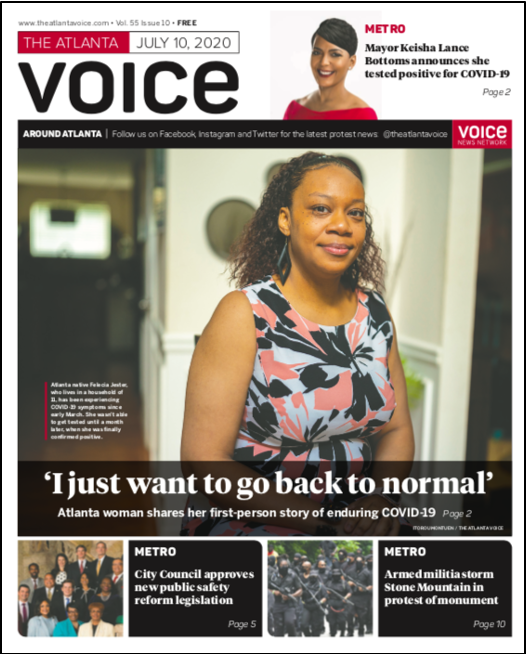
The change is part of a digital transformation lab for African American newspapers sponsored by the Local Media Association, an industry group that serves more than 3,000 newspapers, TV stations, digital news sites, radio stations, directories and research and development partners.
Its Accelerate Local initiative is designed to reinvent business models for news, with The Atlanta Voice, The Dallas Weekly, New York Amsterdam News, Houston Defender and The Washington Informer as pilot partners.
“According to a recent Local Media Association survey, African-American newspaper owners, like many other media outlets, are concerned about the future of their publications and struggle with digital transformation — only 9.5% of their revenue comes from digital,” the association said in September, when the pilot program was announced. “The five pilot partners have been in business an average of 75-plus years and have strong ties to their communities.”
In a report on the Voice issued Wednesday, Joe Lanane wrote for the association that the Voice was participating in programs focusing on its content management system and customizing its web pages, thanks to grants from the Knight Foundation, Google and Facebook.
“It’s our own digital fun factory,” said Marshall A. Latimore, editor in chief and chief content officer, of the Facebook Video Accelerator program, “listing podcasts, small concerts, TED talks, talk shows and documentaries as potential future content that can be done inside the new space. They have even considered renting out the space to other small community businesses and organizations once it’s completed,” Lanane wrote.
“Other initiatives include live streams with reporters, particularly sports reporters who are limited on coverage opportunities during quarantine, so audiences can engage with staff directly. The ideas are still in [their] early stages and are yet to gain enough traction to be monetized. . . .”
Publisher Janice Ware added, “When I listen to these stories about COVID, African Americans are suffering disproportionately more, but there’s no magazine speaking to that segment of society.”
“The new publication will be called Health Plus, Ware said, and it’s expected to debut in October during breast cancer awareness month,” Lanane wrote.
“If it’s successful, Health Plus could someday expand beyond Atlanta, she said.”
Lanane also wrote, “The Atlanta Voice is one of ten founding publishers of the Fund for Black Journalism.
“The first project, focused on K-12 education and the impact of COVID, launches in August. The ten publishers will produce local stories with a special emphasis on disparities that Black students and parents face as they return to school, whether in-person or online. A national journalist will then roll the ten stories up into a national story for distribution in other media outlets.”
The Accelerate Local Initiative was originally planned for six months, but has been extended until the end of the year, Nancy Lane, CEO of the Local Media Association, messaged Journal-isms. The association has also issued reports on the New York Amsterdam News and Real Times.
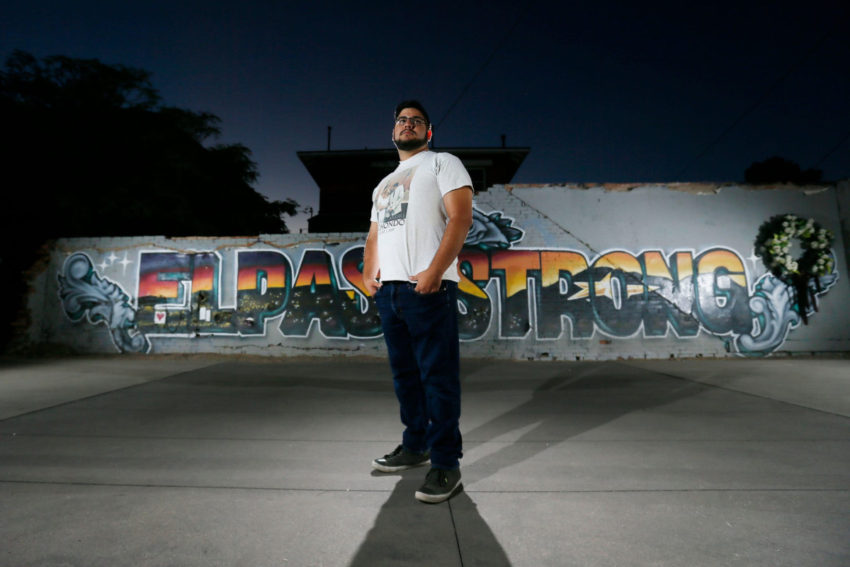
A Grim Anniversary Marred by COVID-19 Limits
“El Paso now faces the first anniversary of the deadliest attack on Hispanics in modern U.S. history amid a pandemic that has made such physical solidarity impossible,” Lauren Villagran wrote Thursday for the El Paso Times, commemorating the shooting of 23 people by an alleged white supremacist on Aug. 3, 2019.
“What should be a time for collective healing is, for many, marred by the divisions forced by the coronavirus — restrictions on gatherings of friends and family, a border largely closed to binational traditions. . . .”
Villagran added, “El Paso now faces the first anniversary of the deadliest attack on Hispanics in modern U.S. history amid a pandemic that has made such physical solidarity impossible. What should be a time for collective healing is, for many, marred by the divisions forced by the coronavirus — restrictions on gatherings of friends and family, a border largely closed to binational traditions.”
Villagran also wrote, “The hate-fueled attack scarred the community on both sides of the border. Yet the year has been marked not by calls for vengeance but by acts of kindness. Even under the gray cloud of coronavirus, the focus is squarely on community healing. . . .”
Alfredo Corchado of the Dallas Morning News produced an interactive El Paso story that the News put behind a paywall as “premium content.”
A year ago, we were calling our loved ones to make sure they were okay.
Some of them never picked up. @ajcorchado, @cassandrajar, @James_Barragan, thank you for your reporting.
We will never forget the day we had to rise up to make #ElPasoStrong. https://t.co/GTVs8SNr6d
— Sol Chávez (@marisolchs) August 3, 2020
Imogene Harris, Gary Publisher, Dies at 88
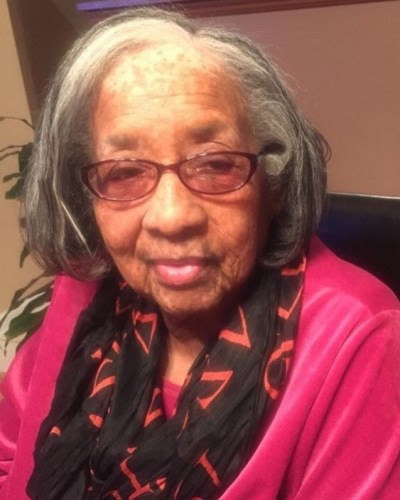 “Imogene Harris, (pictured) who founded Gary’s INFO Newspaper has died, family members announced July 22,” the 411 Weekly News Magazine in Gary, Ind., reported last week. “She was 88. Harris and her late husband James Templeton Harris published INFO, a weekly, from 1963 until 2006.
“Imogene Harris, (pictured) who founded Gary’s INFO Newspaper has died, family members announced July 22,” the 411 Weekly News Magazine in Gary, Ind., reported last week. “She was 88. Harris and her late husband James Templeton Harris published INFO, a weekly, from 1963 until 2006.
“With its motto of ‘Eye on the Community,’ INFO filled the bill of a community newspaper in every sense.
“Passionate about publishing, J.T. and Imogene were eager to showcase their community’s citizens, activities, and issues. They recruited and trained several generations of journalists, photographers, secretaries, accountants, bookkeepers, and printers.
“Vernon Williams, IUPUI Communications and Community Engagement Strategist, was a student at Roosevelt High in the 60s and was among the early INFO Teen Scene reporters Imogene encouraged. After college and more work for INFO, he became a Gary Post Tribune reporter and columnist.
“Williams remembers other journalists who got their start at INFO – Cynthia Minor, Craig Marberry, Al Boswell, Chuck Deggans, Tommy Williams, Ana McCune, Paula Wilson, Robin Marcus, Carmen Wray, Carmen McCullom, and Donna Britt – and went on to continue their work for other media outlets. . .
. .
Short Takes
- “Americans want more newsroom diversity. But they differ on what kind,” according to a Gallup and Knight Foundation poll of 20,000 people on trust in media. “This breakdown is along party and racial lines. Democrats (49%) and blacks (60%) prioritize racial/ethnic diversity in hiring, while Republicans (51%) and whites (35%) prioritize ideological diversity in journalists’ political views,” according to the study, whose results were released Tuesday by the Knight Foundation.

- The 19th*, “a women-based, nonprofit newsroom, launched Monday and will report on topics such as gender, politics and policy,” Coral Murphy reported for USA Today. . . . USA TODAY and Univision are partnering with the 19th for the launch. Although the stories will be available to any news outlet, the USA TODAY Network will regularly republish the stories across its platforms in more than 250 markets.” The project was founded by former Texas Tribune editor-in-chief Emily Ramshaw, who said, “We are working on storytelling that exposes disparities, discrepancies and the disadvantages that affect women, especially women of color, in our country.” Errin Haines left the Associated Press race-relations team to become the editor-at-large at the 19th*, as Angelina Chapin reported Sunday for New York magazine’s The Cut.
- The “gap in homeownership rates between Black and white Americans is wider than it was before the Civil Rights movement,” Nigel Chiwaya and Janell Ross reported Monday for NBC News. “Seventy-six percent of white households owned their homes at the end of the second quarter of 2020, compared to just 47 percent of Black households, according to the Census Bureau. That 29-percentage-point gap, perpetuated by decades of housing and economic policies favorable toward white buyers and designed to exclude Black buyers, has only been exacerbated by the pandemic and before it the 2008 financial crisis. Homeownership is the prime driver of America’s ongoing wealth gap. . . .”
- NBC News Digital is adding “dozens” of new jobs, including one as reporter for NBC BLK. Chris Berend, executive vice president of digital for the NBC News Group, tweeted about the positions on July 28 and told the NBC staff, “we have some urgent opportunities to tackle. Chief among them is making tangible and consistent progress toward further diversifying our organization, our coverage and our audiences.” Job openings are listed here and here.
- “The Trump administration is detaining immigrant children as young as 1 in hotels, sometimes for weeks, before deporting them to their home countries under policies that have effectively shut down the nation’s asylum system during the coronavirus pandemic, according to documents obtained by The Associated Press,” Nomaan Merchant reported July 22 for the AP. Merchant also wrote, “The hotels have been used nearly 200 times, while more than 10,000 beds for children sit empty at government shelters. . . .”
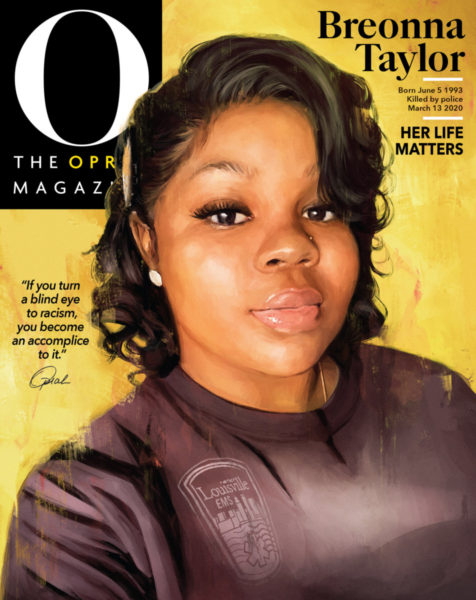
- “For the first time in its 20-year history, Oprah Winfrey will not be the cover star of her namesake magazine,” Kerry Flynn reported Thursday for CNN Business. “Instead, the September issue’s cover will pay tribute to Breonna Taylor, the 26-year-old Black woman who was killed by police in March. . . .” Meanwhile, “O, The Oprah Magazine is ending its regular monthly print editions with the December 2020 issue after 20 years of publication,” Tali Arbel reported July 27 for the Associated Press. In addition, “The Oprah Conversation” is set to debut Thursday on AppleTV+ and, according to a press release, “will continue to explore impactful and relevant topics with fascinating thought leaders from all over the world,” Lisa Respers France reported July 28 for CNN.

- Fifty-seven emerging journalists have been selected for the second year of the intensive year-long Poynter-Koch Media and Journalism Fellowship program, Mel Grau reported Wednesday for the Poynter Institute. “This year’s cohort is incredibly diverse, consisting of not just reporters but also visual journalists, designers and opinion writers. Fellows are placed as paid, full-time journalists at such esteemed local news outlets as The Dallas Morning News, Miami Herald/El Nuevo, WBTV Charlotte and St. Louis Public Radio and at niche outlets with national reach such as Chalkbeat and Blavity. . . .”
 Isabel Wilkerson’s (pictured) new book, “Caste: The Origins of Our Discontents,” published Tuesday, is winning raves. “It’s an extraordinary document, one that strikes me as an instant American classic and almost certainly the keynote nonfiction book of the American century thus far,“” Dwight Garner wrote Friday for The New York Times. “It made the back of my neck prickle from its first pages, and that feeling never went away.” Oprah Winfrey chose “Caste” as her book club pick. “The Warmth of Other Suns,” about the Great Migration and the first book by Wilkerson, a Pulitizer Prize-winner formerly at the Times, has become a classic.
Isabel Wilkerson’s (pictured) new book, “Caste: The Origins of Our Discontents,” published Tuesday, is winning raves. “It’s an extraordinary document, one that strikes me as an instant American classic and almost certainly the keynote nonfiction book of the American century thus far,“” Dwight Garner wrote Friday for The New York Times. “It made the back of my neck prickle from its first pages, and that feeling never went away.” Oprah Winfrey chose “Caste” as her book club pick. “The Warmth of Other Suns,” about the Great Migration and the first book by Wilkerson, a Pulitizer Prize-winner formerly at the Times, has become a classic.
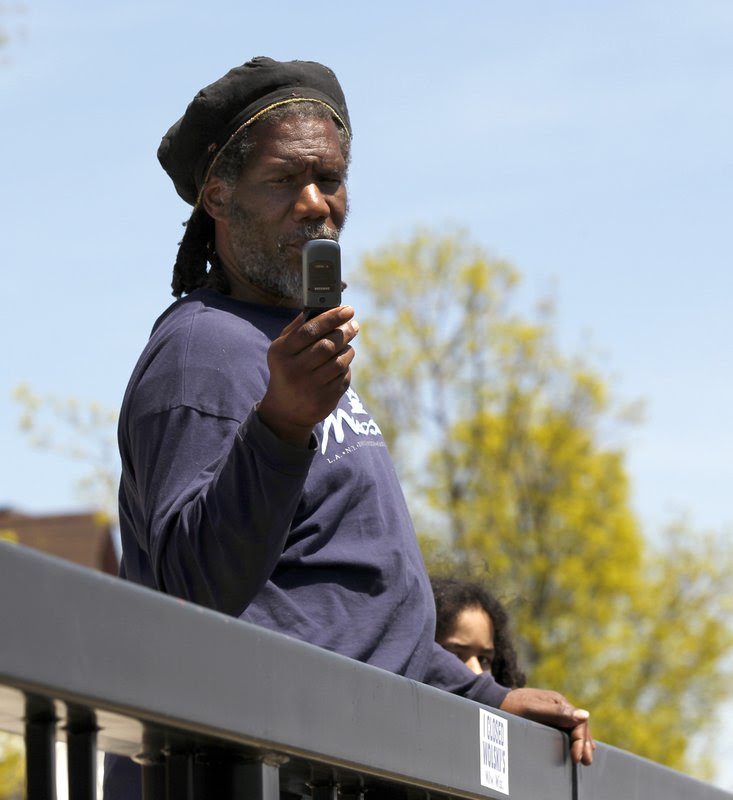 “The shooting death in broad daylight of a Black man affectionately known in his Milwaukee neighborhood as “The Ras” (pictured) appears to have mystified police while spurring prominent conservatives in Wisconsin to speculate that he was killed because of his support for President Donald Trump,” Scott Bauer reported Friday for the Associated Press. A Rastafarian, which inspired his nickname, Bernell Trammell, 60, for decades ran eXpressions Journal, a small publication that focused on political and spiritual news.” Reporting on a vigil for him in the Milwaukee Journal Sentinel Friday, updated Monday, Sophie Carson added, “Trammell also carried signs supporting the Black Lives Matter Movement and state Sen. Lena Taylor, a Democrat. . . .”
“The shooting death in broad daylight of a Black man affectionately known in his Milwaukee neighborhood as “The Ras” (pictured) appears to have mystified police while spurring prominent conservatives in Wisconsin to speculate that he was killed because of his support for President Donald Trump,” Scott Bauer reported Friday for the Associated Press. A Rastafarian, which inspired his nickname, Bernell Trammell, 60, for decades ran eXpressions Journal, a small publication that focused on political and spiritual news.” Reporting on a vigil for him in the Milwaukee Journal Sentinel Friday, updated Monday, Sophie Carson added, “Trammell also carried signs supporting the Black Lives Matter Movement and state Sen. Lena Taylor, a Democrat. . . .”
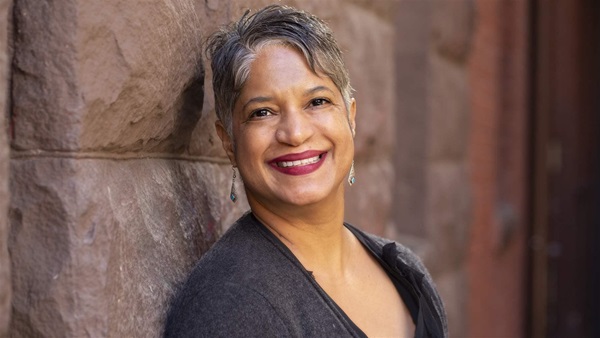 “Teresa Wiltz (pictured), a veteran journalist who has written about the intersection of politics, policy and culture for some of the nation’s most influential publications, will join the politics team to help expand a critical area of coverage for POLITICO,” the publication announced Tuesday. As politics editor reporting to Mike Zapler, deputy managing editor focusing on politics, “Teresa will drive editorial content, overseeing a small team of reporters who will cover national politics issues, culture and other issues at the intersection of race and politics,” Robin Turner, director of editorial diversity initiatives, messaged Journal-isms.
“Teresa Wiltz (pictured), a veteran journalist who has written about the intersection of politics, policy and culture for some of the nation’s most influential publications, will join the politics team to help expand a critical area of coverage for POLITICO,” the publication announced Tuesday. As politics editor reporting to Mike Zapler, deputy managing editor focusing on politics, “Teresa will drive editorial content, overseeing a small team of reporters who will cover national politics issues, culture and other issues at the intersection of race and politics,” Robin Turner, director of editorial diversity initiatives, messaged Journal-isms.
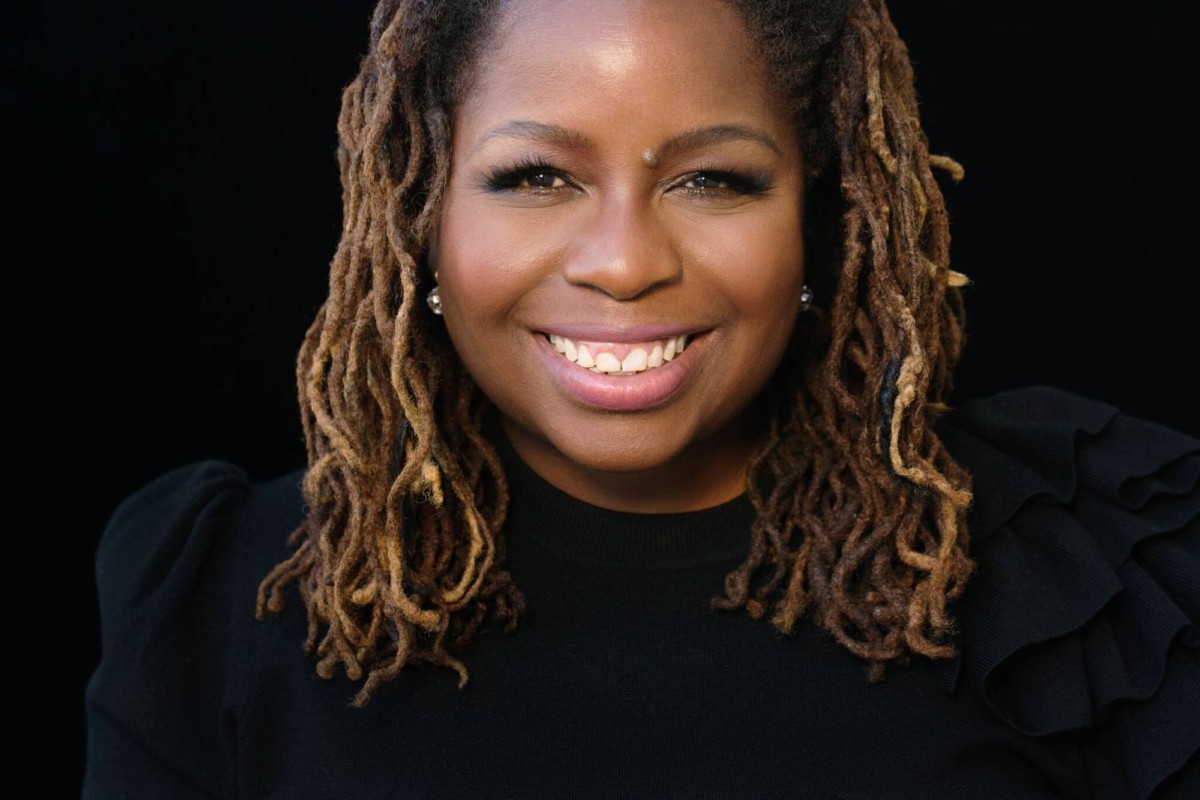 Veronica Chambers (pictured), who has written and edited several books and anthologies, has been promoted to editor, Narrative Projects at the New York Times, the newspaper announced Wednesday. “In this new role, Veronica will steer several large projects a year within Special Projects and in partnership with desks including Style, Culture, International and Sports. In addition, she will continue to develop projects that can play in longer form, as books, podcast episodes, and on stage as events. . . .”
Veronica Chambers (pictured), who has written and edited several books and anthologies, has been promoted to editor, Narrative Projects at the New York Times, the newspaper announced Wednesday. “In this new role, Veronica will steer several large projects a year within Special Projects and in partnership with desks including Style, Culture, International and Sports. In addition, she will continue to develop projects that can play in longer form, as books, podcast episodes, and on stage as events. . . .”
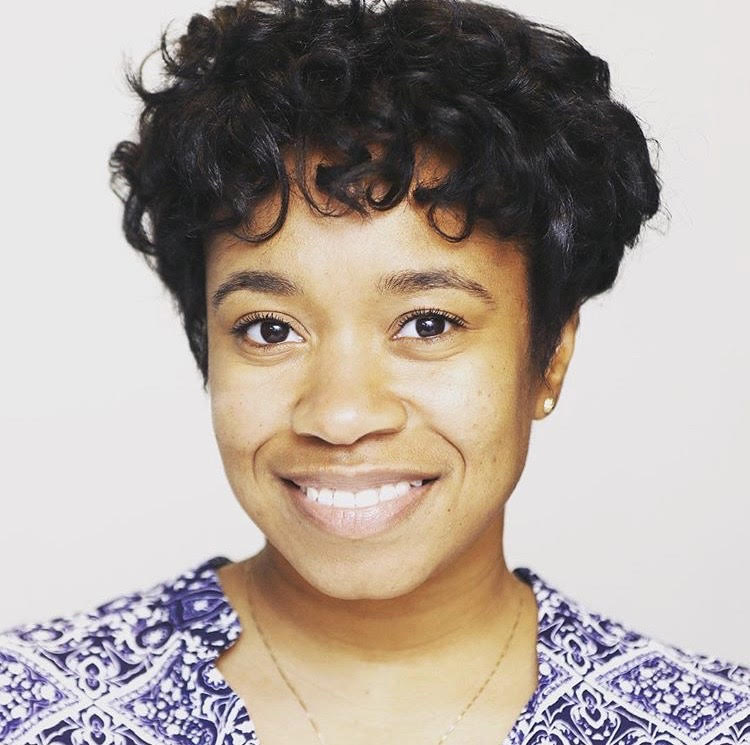 Jan Ransom (pictured), a New York Times beat reporter on the Manhattan courts and district attorney, as well as on the state and city correction systems, is joining “Metro’s investigative team, where she will continue to focus on criminal justice but plunge into other topics as well,” Times editors announced July 27. Most newspaper investigative teams are conspicuously devoid of journalists of color. “Over the last year, she helped to lead our coverage of the Harvey Weinstein trial, and the mistrial and then conviction of a man accused of killing a Queens jogger,” the Times said.
Jan Ransom (pictured), a New York Times beat reporter on the Manhattan courts and district attorney, as well as on the state and city correction systems, is joining “Metro’s investigative team, where she will continue to focus on criminal justice but plunge into other topics as well,” Times editors announced July 27. Most newspaper investigative teams are conspicuously devoid of journalists of color. “Over the last year, she helped to lead our coverage of the Harvey Weinstein trial, and the mistrial and then conviction of a man accused of killing a Queens jogger,” the Times said.
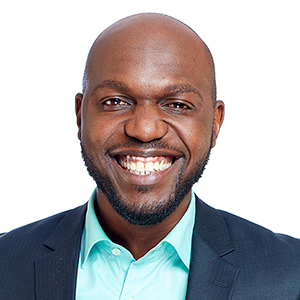 Larry Madowo (pictured), a Kenya native who was Africa business editor for the BBC before becoming a 2019-2020 Knight-Bagehot fellow at Columbia Journalism School, has joined BBC World as U.S. correspondent. In June, Madowo wrote “What it’s like to be an African in the US” for the BBC.
Larry Madowo (pictured), a Kenya native who was Africa business editor for the BBC before becoming a 2019-2020 Knight-Bagehot fellow at Columbia Journalism School, has joined BBC World as U.S. correspondent. In June, Madowo wrote “What it’s like to be an African in the US” for the BBC.
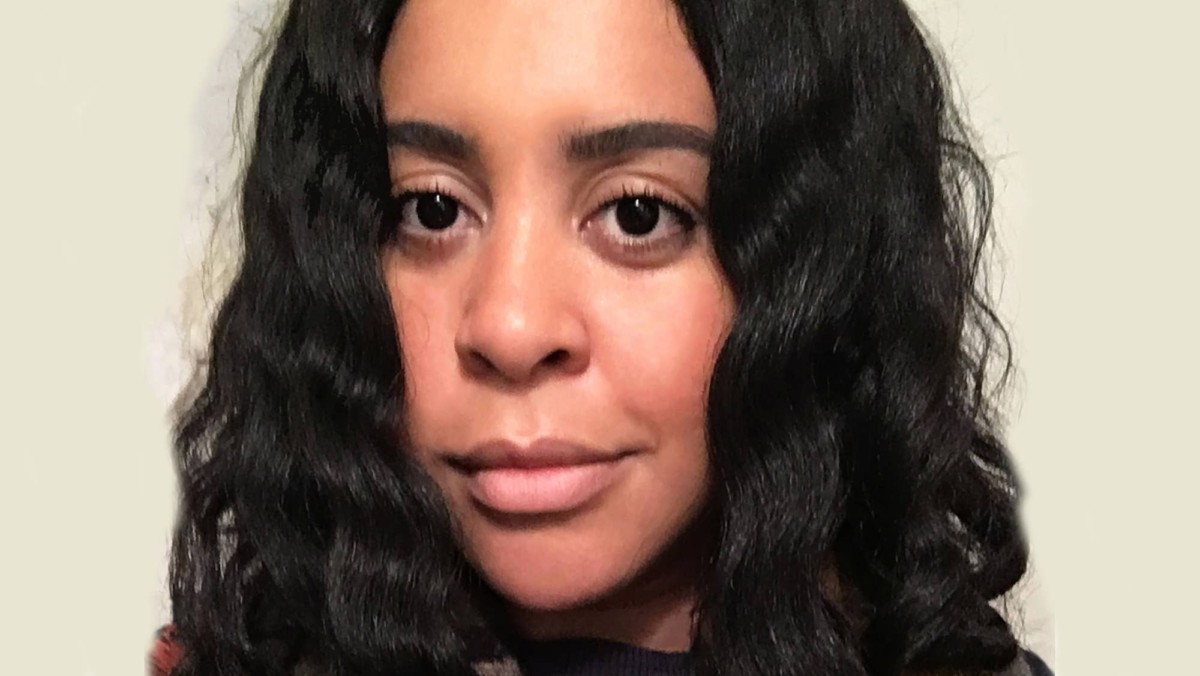 Tiffanie Graham (pictured), who has held positions at NBC and ABC News, Elle, Vogue and W magazine, where she was a senior visuals editor, is joining The New York Times as Parenting photo editor. “This is a new role, in which Tiffanie will conceive of, assign and edit images to elevate, enliven and broaden the photography for the Parenting section,” the Times said July 28.
Tiffanie Graham (pictured), who has held positions at NBC and ABC News, Elle, Vogue and W magazine, where she was a senior visuals editor, is joining The New York Times as Parenting photo editor. “This is a new role, in which Tiffanie will conceive of, assign and edit images to elevate, enliven and broaden the photography for the Parenting section,” the Times said July 28.
 “My mom loved me. And I loved her,” the biracial Jeneé Osterheldt (pictured) wrote July 26 in the Boston Globe. “But that didn’t stop racism from living between us. Anti-Blackness in America is so deep and insidious that sometimes my mom would view my love for her, our very blood bond, as something that hinged on how I self-identify. . . .” Osterheldt also wrote, “Racial science is dangerous, and supremacist Louis Agassiz tried to use it to fight miscegenation. He would call a woman like me an inferior ‘hybrid,’ a danger to whiteness that needed to be eradicated. And that thinking, hundreds of years old,” is “still present today. . . .” Also: Cynthia Adina Kirkwood
“My mom loved me. And I loved her,” the biracial Jeneé Osterheldt (pictured) wrote July 26 in the Boston Globe. “But that didn’t stop racism from living between us. Anti-Blackness in America is so deep and insidious that sometimes my mom would view my love for her, our very blood bond, as something that hinged on how I self-identify. . . .” Osterheldt also wrote, “Racial science is dangerous, and supremacist Louis Agassiz tried to use it to fight miscegenation. He would call a woman like me an inferior ‘hybrid,’ a danger to whiteness that needed to be eradicated. And that thinking, hundreds of years old,” is “still present today. . . .” Also: Cynthia Adina Kirkwood
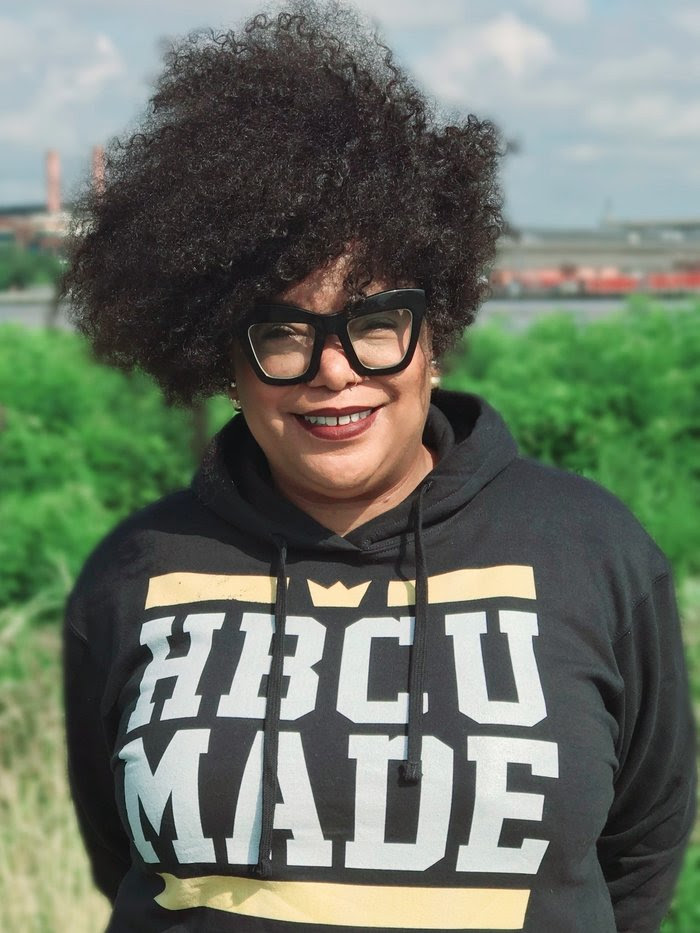 “Nikki Jones (pictured), director of agile transformation and program management at NPR, has been promoted to the new expanded role of vice president of change management and transformation, the network announced July 28. “In this capacity she will work to ensure NPR delivers on its business and cultural aspirations, develops more inclusive decision making and transparent ways of setting project plans and accountabilities, and builds stronger support systems for cross-departmental collaboration. Jones and her team will become a standalone department adjacent to HR and reporting to Chief HR Officer Carrie Storer. . . .”
“Nikki Jones (pictured), director of agile transformation and program management at NPR, has been promoted to the new expanded role of vice president of change management and transformation, the network announced July 28. “In this capacity she will work to ensure NPR delivers on its business and cultural aspirations, develops more inclusive decision making and transparent ways of setting project plans and accountabilities, and builds stronger support systems for cross-departmental collaboration. Jones and her team will become a standalone department adjacent to HR and reporting to Chief HR Officer Carrie Storer. . . .”
- “One of the biggest staff rebellions in online media took place last year, when all of the journalists working at the irreverent, sports-centric website Deadspin resigned in protest after clashing with their bosses,” Marc Tracy reported July 28 for the New York Times. “Now Deadspin’s former writers and editors — 18 of the roughly 20 who quit last year — have reunited to start a digital media company, Defector Media, that they will own and operate themselves. . . .” Tom Ley, a former features editor at Deadspin who will be the editor in chief, messaged Journal-isms that these people of color would be on the staff: Maitreyi Anantharaman, Samer Kalaf, Billy Haisley, Jasper Wang, Giri Nathan,and Luis Paez-Pumar. Ley did not respond when asked whether they were all on the editorial side and whether he knew their ethnicities.
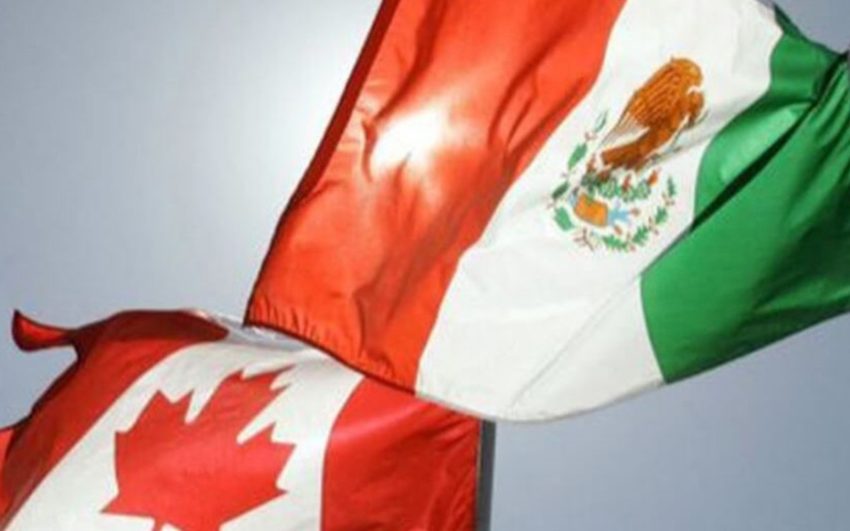
- “We started Conexión Migrante with the notion that migrants had nostalgia about their roots, about what was happening in the places they left,” says Patricia Mercado, Sebastián Auyanet reported July 27 for the Membership Puzzle Project at New York University. Now, the publication lets migrants’ questions set the editorial agenda. “Conexión Migrante rarely publishes a story that doesn’t originate with a question from the community. . . . This is how Conexión Migrante found its niche as rigorous service journalism designed with and for Latino immigrants in the U.S. By the end of 2019, they had answered more than 2,000 phone calls and replied to almost 10,000 Facebook messages. In early 2020, before the pandemic, they were receiving an average of 450 Facebook messages and 200 phone calls a month. . . .”
- “Police in Morocco on Wednesday arrested a dissident journalist on charges of espionage and rape, prosecutors said,” Deutsche Welle, based in Bonn, Germany, reported Thursday. “Omar Radi, 33, was called in for questioning for the 10th time since June 24 and placed in custody. He has been investigated for ‘receiving foreign funding,’ ‘undermining the external security of the state’ and having connections with foreign spies. He also faces charges of rape following a complaint filed by a young woman. Radi has denied all allegations. . . .” Also: “Democracy Now!”
- “The murder of a reporter known for exposing corruption has set off a wave of protests across Pakistan’s western Balochistan province, one of the most dangerous places in the world to be a journalist,“ Shah Meer Baloch and Emma Graham-Harrison reported Monday for the Guardian. “Anwar Jan was shot dead by two gunmen on the evening of 23 July as he drove his motorbike home in the town of Barkhan. Three days after Jan was killed, more than a thousand people gathered in his town calling for justice. . . .”
- “Facing a continuing upward trajectory in Covid-19 cases, the Indian government is clamping down on media coverage critical of its handling of the pandemic,” Danish Raza reported Friday for the Guardian. “More than 50 Indian journalists have been arrested or had police complaints registered against them, or been physically assaulted. The majority of those facing action are independent journalists working in rural India, home to more than 60% of the 1.35 billion population. . . .”
- “Media folk are fond of using the cliché ‘speaking truth to power,’ ” Steven Friedman and James Oatway wrote Thursday for New Frame in Johannesburg. “In this country, that rarely means speaking to private power, which is wielded outside the government. It means telling the government “the truth’, which usually means exposing corruption or incompetence. These are important functions. But, if we look at how most media houses here have dealt with Covid-19, they are exercised very selectively. They do not include asking questions that might have forced the government and its advisors to act in ways that would have spared the country much pain. . . .”
Journal-isms Fund Drive Continues

“As a veteran reporter, I turn to Richard Prince’s Journal-isms all the time for the latest information on people of color in our business. There is no spin, no slant, just the facts to keep us informed. I also appreciate that he holds journalists and media companies accountable . . . . Keep up the good work. #NoSpinAllowed” (Courtesy Rebecca Aguilar)
— Rebecca Aguilar, freelance reporter; diversity committee chair, Society of Professional Journalists; former vice president, National Association of Hispanic Journalists. Support Journal-isms here or here
Support Journal-ismsFacebook users: “Like” “Richard Prince’s Journal-isms” on Facebook.
Follow Richard Prince on Twitter @princeeditor
Richard Prince’s Journal-isms originates from Washington. It began in print before most of us knew what the internet was, and it would like to be referred to as a “column.” Any views expressed in the column are those of the person or organization quoted and not those of any other entity. Send tips, comments and concerns to Richard Prince at journal-isms-owner@yahoogroups.com
View previous columns (after Feb. 13, 2016).
- Diversity’s Greatest Hits, 2018 (Jan. 4, 2019)
- Book Notes: Is Taking a Knee Really All That? (Dec. 20, 2018)
- Book Notes: Challenging ’45’ and Proudly Telling the Story (Dec. 18, 2018)
- Book Notes: Get Down With the Legends! (Dec. 11, 2018)
- Journalist Richard Prince w/Joe Madison (Sirius XM, April 18, 2018) (podcast)
- Richard Prince (journalist) (Wikipedia entry)
- February 2018 Podcast: Richard “Dick” Prince on the need for newsroom diversity (Gabriel Greschler, Student Press Law Center, Feb. 26, 2018)
- Diversity’s Greatest Hits, 2017 — Where Will They Take Us in the Year Ahead?
- Book Notes: Best Sellers, Uncovered Treasures, Overlooked History (Dec. 19, 2017)
- An advocate for diversity in the media is still pressing for representation, (Courtland Milloy, Washington Post, Nov. 28, 2017)
- Morgan Global Journalism Review: Journal-isms Journeys On (Aug. 31, 2017)
- Diversity’s Greatest Hits, 2016
- Book Notes: 16 Writers Dish About ‘Chelle,’ the First Lady
- Book Notes: From Coretta to Barack, and in Search of the Godfather
- Journal-isms’ Richard Prince Wants Your Ideas (FishbowlDC, Feb. 26, 2016)
- “JOURNAL-ISMS” IS LATEST TO BEAR BRUNT OF INDUSTRY’S ECONOMIC WOES (Feb. 19, 2016)
- Richard Prince with Charlayne Hunter-Gault,“PBS NewsHour,” “What stagnant diversity means for America’s newsrooms” (Dec. 15, 2015)
- Book Notes: Journalists Follow Their Passions
- Book Notes: Journalists Who Rocked Their World
- Book Notes: Hands Up! Read This!
- Book Notes: New Cosby Bio Looks Like a Best-Seller
- Journo-diversity advocate turns attention to Ezra Klein project (Erik Wemple, Washington Post, March 5, 2014)

